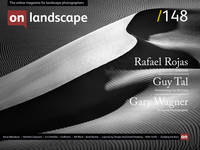Healing through making photographs
But perhaps the great work of art has less importance in itself than in the ordeal it demands of a man and the opportunity it provides him of overcoming his phantoms and approaching a little closer to his naked reality. ~Albert Camus
In one of the most beautiful testaments to the expressive powers of photography, Ernst Haas posed what I consider one of the most meaningful questions a person should contemplate in deciding to pursue photography with any kind of seriousness. “Living in a time of crucial struggle, the mechanization of men,” Haas wrote, “photography for me became nothing but another example of this paradoxical problem: how to overcome, how to humanize the machine on which we are so very dependent—the camera.”
How to overcome and to humanise the machine?
The longer I practice photography, the less inclined I am to keep up with photographic technology. My pocketable “point-and-shoot” camera makes technically better images than my old “professional” 35mm film cameras, and yields fantastic prints. The machine has reached a degree of excellence and quality already exceeding most practical needs for the common function of capturing images. But how much progress have we made in humanising the camera? In assimilating it in ways relevant to the human experience? In overcoming it being, ultimately, just a machine?
Cynics may contend that the machine is humanised (if not overly so) by having become a part of contemporary culture, whether by enabling the incessant sharing of “selfies” or pictures of food, by offering a readily available means for exposing police brutality or the horrors of wars, by enabling people to see things and places they otherwise would not, by making possible various forms of entertainment or marketing, etc. Indeed, these are all aspects of humanity, but I wonder if this is what Haas meant by humanising the machine. To humanise may be taken to mean two similar-sounding but quite different things—to make human, or to make humane.


